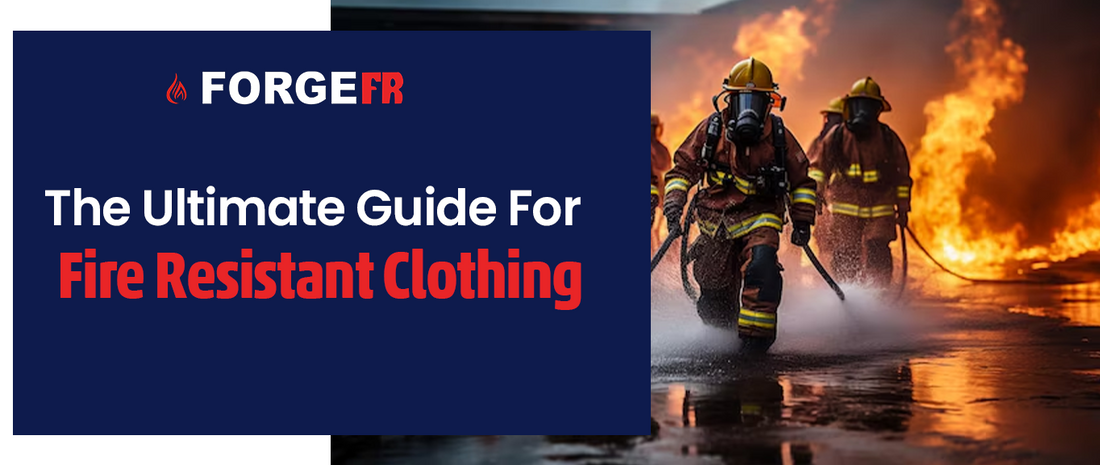To ensure human safety in diverse fire scenarios, it is necessary to wear Fire Resistant Clothing. For all kinds of employment, outdoor activities, and emergencies, Fire Resistant Clothing is needed.
It's important to understand Fire Resistant Clothing, whether you work in an industrial setting, like outdoor activities, or just want to be prepared for emergencies.
What do you mean by Fire Resistant Clothing?
Clothing that has been carefully constructed to resist fire or self-extinguish when exposed to flames is known as Fire Resistant Clothing. When there is a chance of fire, this kind of clothing can lessen the chance of burns.If the fabric catches fire, it will come to an end once the heat source is removed. It reduces the risk of injury and provides the wearer with crucial escape time.
But keep in mind that flame resistance is not equal to fireproofness. Any Fire Resistant Clothing will burn if it is heated for an extended length of time.
How Does Fire Resistant Clothing Function?
The purpose of fire resistance Clothing is to stop burning by using particular materials and production processes. Fire Resistant Clothing achieves its protective qualities primarily through two mechanisms:
1. Flame-Retardant Treatments: Materials coated with fire-resistant chemicals can be used to make Fire Resistant Clothing. These substances are added to the fabric either during the manufacturing process or in later treatments.
They function by changing the chemical composition of the fabric to either set out fire instantly or drastically slow down the burning process. This delay lessens the chance and severity of burn injuries by giving the user critical seconds to respond and get away from the fire source.
2. Inherent Fire Resistance: Certain materials used to make fire-resistant clothing naturally resist fire. When exposed to heat or fire, these materials do not easily catch fire because they are inherently non-flammable. Polyester fibers such as Nomex and Kevlar, together with specific varieties of treated wool, are examples.
Advantages of Fire Resistant Clothing
1. Reduced Burn Injuries: The use of Fire Resistant Clothing reduces the possibility and intensity of injuries from burns by stopping or delaying clothing explosions.
2. Increased Safety: It improves people's overall safety by adding an essential layer of protection in scenarios where exposure to heat or flames is possible.
3. Follow Safety Standards: Fire Resistant Clothing meets strict industry norms and regulations, guaranteeing that workplaces follow safety procedures and reduce hazards.
4. Long-term Cost Efficiency: Fire Resistant Clothing provides long-term benefits by lowering medical expenditures related to burn injuries and eliminating lost productivity as a result of injury, even after initial investment costs.
5. Versatility: For a range of industries and activities, it comes in a variety of styles and materials that ensure protection and comfort without sacrificing functionality.
Conclusion
People who live in high-risk areas for fires might need to wear Fire Resistant Clothing. Clothes use modern materials and production techniques to improve safety and lower the risk of burn damage. Because of its strength, adaptability, and strict safety measures, it is a dependable option in many industries.
It is important to wear clothing that is resistant to fire since it can save lives and improve working conditions. It also shows that one is prepared for difficulties and careful of possible hazards.
FAQ
Q.1 Can you wash Fire Resistant Clothing?
Ans. It is possible to wash fire resistant clothes, but it is crucial to adhere to the manufacturer's guidelines. Cloth softeners and bleach might lessen the fire resistance of the cloth; therefore, stay away from them.
Q.2 Is FR fire retardant?
Ans. It is true that FR (Fire Resistant) clothing can prevent fires. The device can either withstand complete ignition or retard the combustion, giving more time to remove the clothing or escape from the fire source.
Q.3 How to make FR clothing?
Ans. FR clothing is made by spraying fabrics with flame-retardant chemicals during the production process or by using materials like aramid fibers, which are naturally non-flammable. By using these techniques, burn injuries are reduced, and the clothing is guaranteed not to catch fire.
Q.4 How to tell if clothing is fire-resistant?
Ans. Check the manufacturer's requirements or the label to find out if the apparel is fire-resistant. When a garment is labelled "FR" (Fire Resistant) or "NFPA compliant," it means it meets fire safety regulations.


